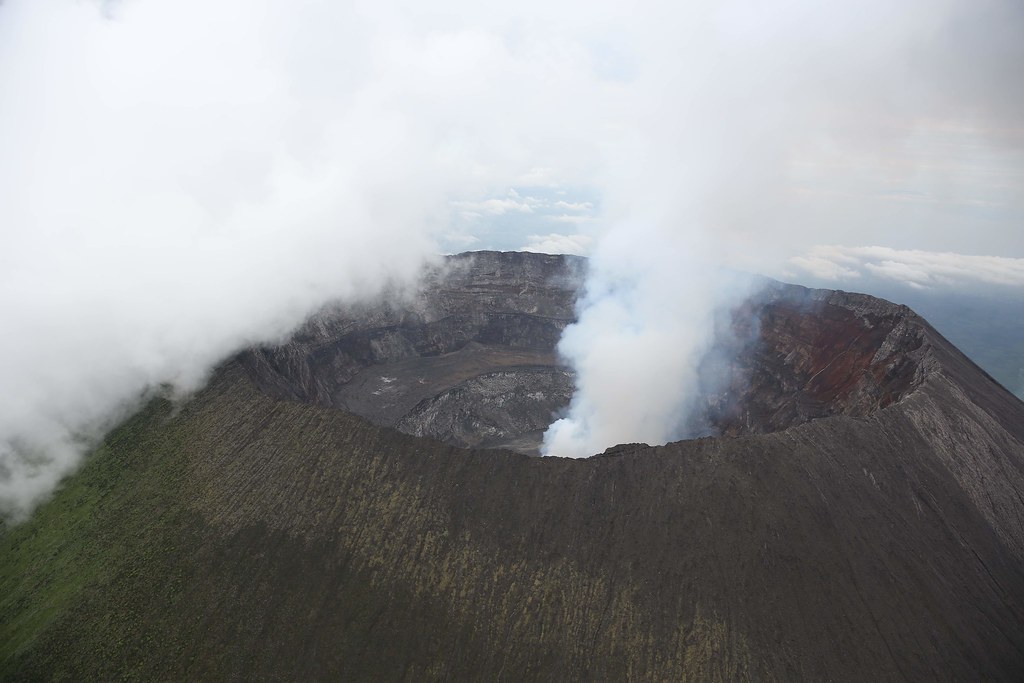
One of the tourist activities that have helped the Democratic Republic of Congo’s tourism business flourish is gorilla trekking in Virunga National Park. Unquestionably the greatest spot for gorilla trekking is Virunga National Park, a famous destination with endangered mountain gorillas and breathtakingly beautiful landscape. Comprising 7,800 square kilometers, the park is situated in the Albertine Rift Valley in Eastern section of the Democratic Republic of Congo right near the Capital Kinshasa. The first national park ever created in Africa, the park was founded in 1925 mostly to safeguard the mountain gorillas living in the Virunga massif’s habitat from disturbance.
The park’s declaration as a UNESCO World Heritage site in 1979
One can reach Virunga National Park by road as well as by air from East of the Democratic Republic of Congo. Many visitors eager for gorilla walking in Virunga National park fly to Kigali International airport in Rwanda and then drive via Gisenyi town crossing to Goma in Congo. From Gisenyi, the trip to the park headquarters at Bukima takes two hours. From Uganda, visitors cross at Bunagana border station in Kisoro town and drive one hour to Bukima, the base for gorilla trekking in Virunga National Park. Ethiopian flights run one weekly to Goma Airport. Travelers without the assistance of a tour operator could want ranger escorts to help them on the ideal path to reach the tourism destinations secure and simple.
Three distinct sectors—say the northern, central, and southern sectors—each with an unmatched variety of landscapes and ecosystems make up the park. Along with mountain gorillas, birds, reptiles, mammals include among other forest elephants, giraffes, buffaloes, chimps, and monkeys call Virunga National Park home.
The southern portion of Virunga is most well-known for its montane tropical forests, active volcanoes, and soft mountain gorillas living on the flanks of the inactive Mikeno volcano. Living exclusively in the Virunga Massif and Bwindi, which includes portions of the Congo, Uganda, and Rwanda, the world’s whole severely endangered mountain gorillas are Third of the population lives in Virunga National Park.
The main draw in this park are mountain gorillas; visitors usually choose to track gorillas from the Virunga National Park since it is less crowded than other parks in the area and the cost of the gorilla tracking permit is also rather low.
Kabirizi gorilla group, Humba, Rugendo, Lulengo, Mapuwa, Munyaga, Nyakamwe, and Bageni gorilla group are the eight habituated gorilla groups allowed to visitors to track as of yet in Virunga National Park.
Originally known as Ndungutse, this group was dubbed Kabirizi gorilla after a very modest and massive silverback slain in a crossfire between the Congo army and the rebels in the Bukima patrol station. Currently under Kabirizi’s direction, a modest silverback, the group confronts rivalry from Masibo, a young silverback. There are now nineteen members in the group.
Currently the calmest gorilla group, with nine members, Humba gorilla group is among the most sought-after ones by visitors. Leading silverback in this group is Humba.
One of the oldest groups in the park, Rugendo gorilla group was habituated in 1989.
Lead by Mvuyekure, Mapuwe gorilla group is located close to Bunagana, Congo-Uganda border. There are 22 Gorillas in this group.
Living in the Jomba area close to Bunagana, the Lulengo gorilla troop was named for a technical director of Virunga National Park who perished by a landmine. There nine members in the group.
Usually found in the Bukima section of the Virunga National Park, Munyaga gorilla group The tribe is proud of an adult female Bilali who delivered twins who sadly passed away in infancy. One of the group’s bold headed silverbacks is Kadogo.
With 11 gorilla individuals, Nyakamwe gorilla group is one of the recently habituated groups in Virunga national park accessible for visitors’ trekking.
Comprising 26 members, Bageni gorilla group is now the biggest gorilla group in Virunga National Park. Though there is fierce competition there, it is expected that the group will dissolve not too far off.
One must first get a gorilla tracking permit from the park headquarters for $400 per person and $150 applicable exclusively to Congo natives before one may be able to undertake gorilla trekking in Congo. The permit costs less than that of Uganda and Rwanda. Only one hour after you reach the eight members each party authorized to trek gorillas. Sick people are recommended not to choose to journey since you would be endangering the gorilla’s life. One cannot journey someone under the age of fifteen.
These guidelines are for your own protection as well as for the conservation of the threatened mountain gorillas.
In Virunga National Park, gorilla trekking is best done in the dry months of June through September and mid-December to February when the paths are less slick. Still, the rain comes at any moment regardless of the season. Packing correctly is therefore absolutely vital. Get a reliable tour operator to arrange a gorilla trekking safari for you at Virunga National Park.
